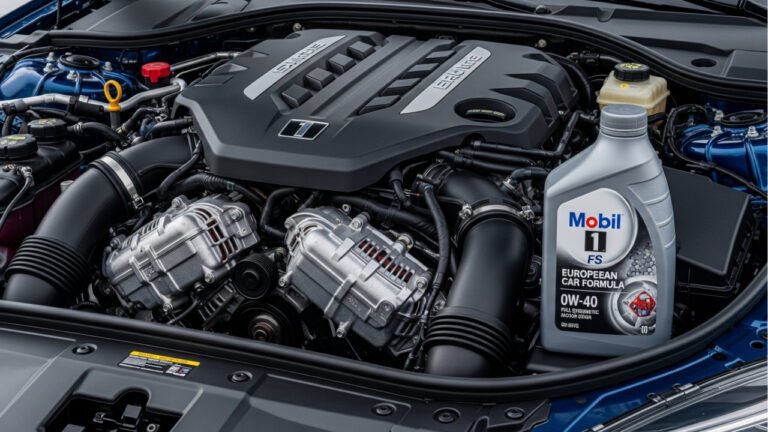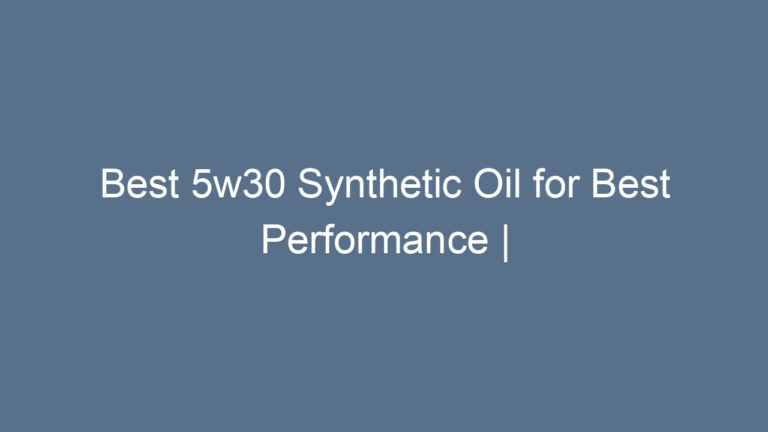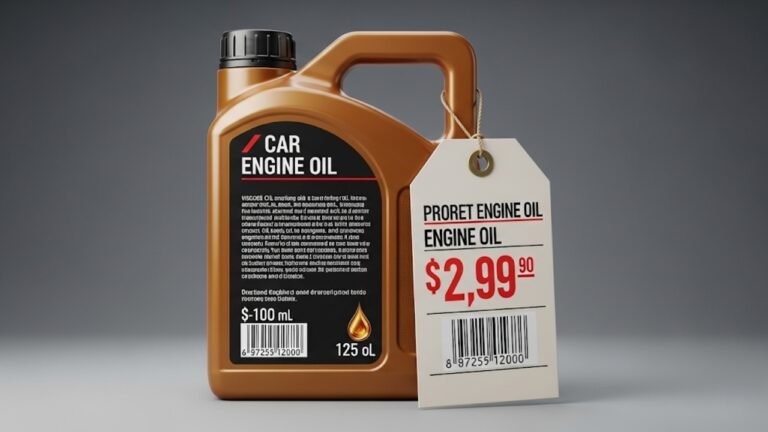The Power of Precision: Rotary Molding Car Oil Tank

Let’s be real—when you think about your car, you probably picture the engine, tires, or maybe that sleek dashboard. But buried beneath all that glam is a small hero: the car oil tank. And not just any oil tank—we’re talking about the rotary molding car oil tank, a product of engineering brilliance and quiet innovation.
You may not see it, but this tank is what keeps your engine alive and healthy. It holds the oil that lubricates, cools, and protects vital parts. Without a reliable oil tank, your car could literally grind to a halt. Yet, most people overlook how these tanks are made—or why it even matters.
Today, I’ll take you behind the scenes. I’ll share what I’ve learned from garage visits, chats with engineers, and hours of digging through research. We’ll explore how rotary molding works, why it’s used for oil tanks, and what it means for your car’s performance and safety. You’ll learn why this tech matters—not just in theory, but in real-life use.
In This Article
- 1 Understanding Rotary Molding: The Backbone of Modern Oil Tanks
- 2 A Walk Through the Manufacturing Process
- 3 Why Car Manufacturers Are Switching to Rotomolded Oil Tanks
- 4 Real-Life Durability: When It Matters Most
- 5 Environmental Impact: Are These Tanks Eco-Friendly?
- 6 Challenges, Misconceptions, and Myths about Rotomolded Tanks
- 7 Installation and Maintenance Tips: Making It Last
- 8 Choosing the Right Rotary Molding Car Oil Tank: Buyer’s Guide
- 9 Real Talk: Why This Tech Matters to Regular Drivers Like Us
- 10 FAQs About Rotary Molding Car Oil Tanks
- 10.1 1. What exactly is a rotary molding car oil tank?
- 10.2 2. Is it better than a metal oil tank?
- 10.3 3. Can I install one myself?
- 10.4 4. How long does a rotomolded oil tank last?
- 10.5 5. Is it safe to use in hot climates?
- 10.6 6. What if the tank cracks or leaks?
- 10.7 7. How do I know if my car uses a rotomolded tank?
- 10.8 8. Are these tanks recyclable?
- 11 Conclusion: Trust the Tech That’s Built to Last
Understanding Rotary Molding: The Backbone of Modern Oil Tanks

Here’s how rotary molding works in simple terms:
-
Plastic powder is poured into a hollow mold.
-
The mold is heated while it rotates slowly in two directions.
-
The plastic melts and coats the inside of the mold evenly.
-
The mold is cooled, and a seamless part is removed.
It sounds simple, but it’s a game-changer. This method creates tanks with no welds, no seams, and very low failure rates. That’s why many manufacturers now prefer the rotary molding car oil tank over traditional metal or blow-molded ones.
Key Benefits of Rotary Molding for Oil Tanks
Let’s break it down into some quick benefits. These aren’t just industry jargon—they make a real difference when you’re on the road.
-
Seamless Design: No leaks, fewer failures.
-
Uniform Thickness: Better structural strength.
-
Corrosion-Resistant: Perfect for oil storage.
-
Custom Shapes: Fit tight spaces in modern cars.
-
Lightweight: Improves fuel economy slightly.
Here’s a comparison table that simplifies things:
| Feature | Rotary Molding Tank | Traditional Metal Tank |
|---|---|---|
| Seams | None | Welded (risk of leakage) |
| Corrosion Resistance | High | Medium to Low |
| Weight | Light | Heavy |
| Customizability | High (complex shapes) | Low |
| Production Cost | Medium | High |
When I first learned this, I couldn’t believe something as humble as an oil tank involved such clever design. But the more I looked into it, the more it made sense.
A Walk Through the Manufacturing Process
Let’s take a journey through a rotary molding factory. You might smell hot plastic in the air and see giant ovens rotating like slow-motion Ferris wheels. Workers in safety gear check molds that look like spaceship parts.
Here’s the typical process broken into steps:
-
Loading the Mold: Technicians pour in a precise amount of powdered plastic (usually polyethylene).
-
Heating and Rotating: The mold enters an oven and rotates. The powder melts and sticks to every inch inside.
-
Cooling: Air or water cools the mold. This solidifies the tank shape.
-
Demolding: The tank is removed and inspected.
-
Trimming and Testing: Excess material is cut off. Each rotary molding car oil tank is pressure-tested for leaks.
It’s like baking a cake—only this cake could save your engine from disaster.
One of my friends who works at an auto parts supplier told me, “We rarely get complaints about rotomolded tanks. The only time we do is if someone installed it wrong.”
That’s powerful testimony.
Why Car Manufacturers Are Switching to Rotomolded Oil Tanks
Let me ask you a quick question. If you could choose a product that’s lighter, lasts longer, and costs less over time, wouldn’t you switch to it?
That’s what’s happening in the automotive industry. More and more car makers—from compact city cars to off-road beasts—are adopting the rotary molding car oil tank because it just makes sense.
Here’s why car companies are making the switch:
-
Weight Reduction: Every gram counts in fuel economy.
-
Shape Flexibility: Designers can tuck tanks into odd corners.
-
Lower Production Waste: Eco-friendly methods win points.
-
Improved Safety: No joints = fewer weak points.
I even saw this first-hand when visiting a local mechanic. He showed me a new SUV’s undercarriage and pointed out the oil tank. “See that? It’s rotomolded. Fits like a glove.”
What’s more impressive? It had no visible bolts or seams—just a clean, curved shape that looked like it belonged in a sci-fi movie.
Real-Life Durability: When It Matters Most
I remember a story from a road trip down to Cox’s Bazar. One of the cars in our group hit a rock under the chassis. The fuel line got dented, but the oil tank held strong. Guess what kind it was? Yep—a rotary molding car oil tank.
That seamless construction saved the engine that day. In rural areas or rough terrain, you don’t want fragile parts. And rotomolded tanks have shown their worth time and again.
Durability Features That Matter:
-
Stress-crack resistance
-
Chemical resistance to engine oils
-
Tough in extreme temperatures
-
Can absorb moderate impacts without breaking
This toughness isn’t just good for rough terrain. City drivers benefit too—think potholes, road debris, or engine heat.
So, whether you’re navigating Dhaka’s traffic or cruising down the Sylhet highways, you need a tank that won’t fail you.
Environmental Impact: Are These Tanks Eco-Friendly?
Now, let’s talk about something close to my heart—and hopefully yours too: the environment.
At first, I had doubts. Plastic oil tanks? Aren’t they bad for the planet? Turns out, rotary molding car oil tanks are greener than you’d think.
Here’s why:
-
Less Manufacturing Waste: The closed mold process keeps waste low.
-
Recyclable Materials: Many use HDPE, which is widely recyclable.
-
Longer Life Span: Fewer replacements = less landfill.
-
Lower Energy Use: Rotomolding uses less energy than injection molding.
Some manufacturers even use recycled plastics. Plus, the tanks can be ground down and reused at the end of their life. It’s not perfect—but it’s a huge step forward.
And let’s face it—if you’re going to use plastic in cars, better to use it wisely. The rotary molding process gives us a way to do just that.
Challenges, Misconceptions, and Myths about Rotomolded Tanks
Even with all these benefits, rotary molding car oil tanks still face a few misconceptions. Some drivers or even technicians hesitate to adopt them because of outdated beliefs or misinformation. Let’s tackle these head-on.
Myth 1: Plastic Can’t Be Strong Enough
One of the oldest myths is that plastic = weak. People think of water bottles or toys, not realizing that rotomolded plastics are industrial-grade. These tanks are designed to survive under pressure, heat, and vibration. They undergo rigorous stress tests before hitting the market.
Myth 2: All Plastics Are the Same
Another misunderstanding is lumping all plastics together. But the polymers used in rotary molding car oil tanks are carefully chosen—usually HDPE or LLDPE, which are known for their chemical and thermal resistance.
Myth 3: Difficult to Repair
It’s true that welding metal is more familiar to old-school mechanics. But plastic tanks can be repaired with plastic welding kits, and since they rarely crack or break, you probably won’t need that.
These myths often vanish once people actually use these tanks. The evidence is strong, and more mechanics are warming up to this technology once they see it in action.
Installation and Maintenance Tips: Making It Last
Installing a rotary molding car oil tank isn’t rocket science, but a few smart practices can help you avoid problems down the line.
Installation Tips:
-
Inspect Before Installing: Look for cracks or warping from shipping.
-
Use the Right Fasteners: Avoid over-tightening. Plastic tanks need even pressure.
-
Fit With OEM Parts: Always match the tank with your car’s original specs.
-
Double-Check for Alignment: A misaligned tank can rub against parts and cause damage over time.
Maintenance Tips:
-
Inspect Every 6 Months: Look for oil stains or residue beneath the car.
-
Clean the Tank Exterior: Wipe away dirt or road salt that might cause wear.
-
Check Vents and Caps: These can clog, causing pressure build-up inside the tank.
Just like you check your engine oil or tire pressure, give your oil tank some love. A quick inspection takes minutes but can prevent a breakdown.
Choosing the Right Rotary Molding Car Oil Tank: Buyer’s Guide
When you go shopping for a rotary molding car oil tank, not all tanks are created equal. Here’s how to make a smart choice that gives you peace of mind:
What to Look For:
- OEM Compatibility: Always pick a tank designed for your car model.
- Material Quality: Look for tanks made from certified HDPE or LLDPE.
- Manufacturing Certification: ISO-certified products usually meet high standards.
- Warranty: A good warranty shows manufacturer confidence.
- Pressure-Tested Tanks: These are more reliable and less likely to leak.
Pro Tip:
Always buy from reputable auto parts suppliers. Cheap knock-offs may not use true rotomolding techniques and can fail faster.
Real Talk: Why This Tech Matters to Regular Drivers Like Us
You don’t need to be a mechanic to appreciate how tech like this improves your car. Think of the rotary molding car oil tank as a silent guardian. It doesn’t roar like the engine, but it keeps the machine alive. And it does so with grace, durability, and smart design.
For drivers in Bangladesh, where weather can be unpredictable and roads less than ideal, having a tank that doesn’t leak or rust is a huge win. It’s peace of mind. You don’t want to worry about your oil tank when you’re stuck in monsoon traffic or taking a family trip to Rangamati.
FAQs About Rotary Molding Car Oil Tanks
1. What exactly is a rotary molding car oil tank?
It’s an oil reservoir made using the rotary molding process, where plastic powder is heated and rotated inside a mold to form a seamless tank.
2. Is it better than a metal oil tank?
In many ways, yes. It’s lighter, corrosion-resistant, seamless, and often longer-lasting under normal use.
3. Can I install one myself?
If you have mechanical experience, possibly. But for most people, it’s best to have a professional handle it to avoid leaks or misalignment.
4. How long does a rotomolded oil tank last?
Usually 8–15 years, depending on driving conditions and maintenance.
5. Is it safe to use in hot climates?
Absolutely. These tanks are made to withstand high temperatures and engine heat.
6. What if the tank cracks or leaks?
Most minor damages can be repaired using plastic weld kits. But if it’s a large crack, replacement is the safer option.
7. How do I know if my car uses a rotomolded tank?
Check with your manufacturer or mechanic. Most modern cars do, especially models post-2015.
8. Are these tanks recyclable?
Yes! Many are made from recyclable HDPE. Ask your local recycling center for disposal options.
Conclusion: Trust the Tech That’s Built to Last
Let’s wrap this up with one key truth: the rotary molding car oil tank might not be the flashiest part of your vehicle, but it’s one of the most critical. It quietly supports everything else. And now, with rotomolding technology, it does so better than ever.
This is the kind of innovation that blends form, function, and sustainability. It’s built to handle heat, time, and impact. It’s designed to reduce leaks, improve safety, and even lower weight for better fuel economy.
So next time you’re under the hood or in the market for car parts, don’t overlook the oil tank. Now you know what to look for—and why it matters.






